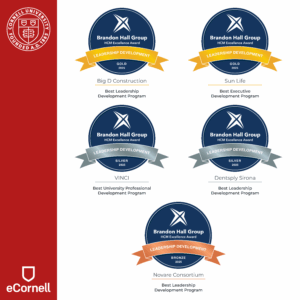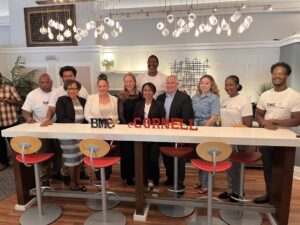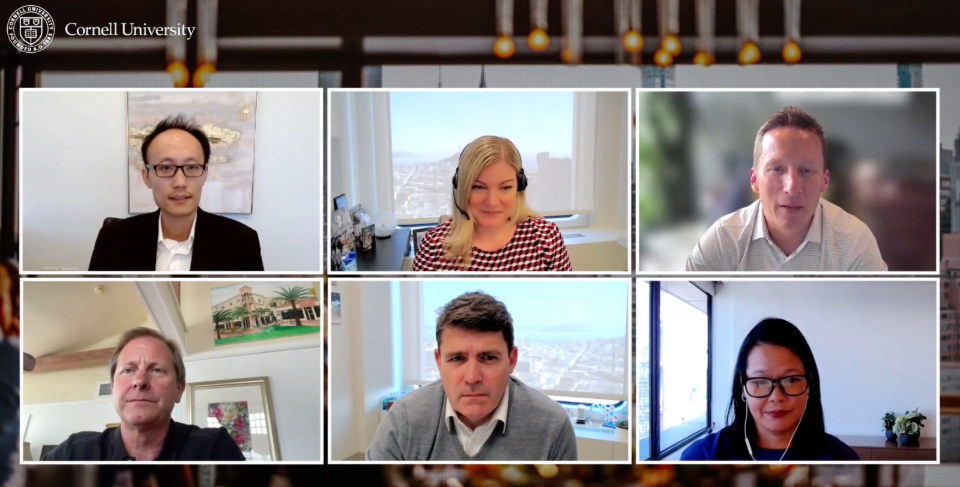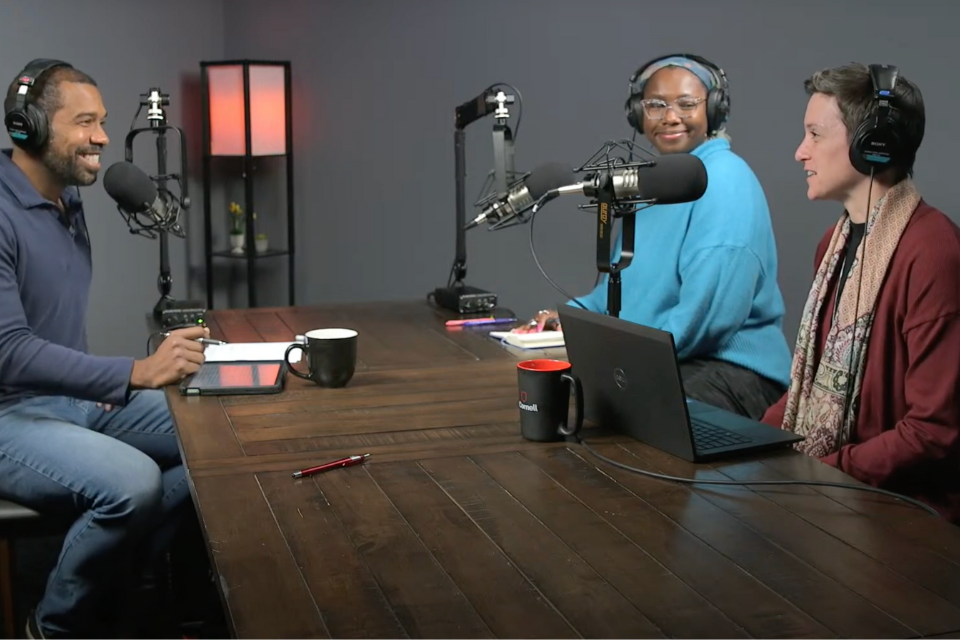Cornell and Corporate Partners Recognized in Five Brandon Hall Award Categories
Cornell University and five of its corporate partners earned recognition in five categories at the 2025 Brandon Hall Group™ Human Capital Management (HCM) Excellence Awards. The annual awards honor organizations that design and deliver programs with measurable impact on leadership development, executive training and workforce growth.
Entries were evaluated on alignment to business needs, program design and delivery, user experience and measurable outcomes.

Award-Winning Programs
Big D Construction received the Gold Award for Best Leadership Development Program. About 30 participants took part in sessions on succession planning, authentic leadership and negotiation, along with a business simulation designed to mirror high-stakes decision-making.
Steve Sauer at Big D program
“This award is a reflection of the impact the program has had on our people,” said Shaun Orr, Chief Information Officer at Big D Construction. “It has brought leadership training to our team and sparked a shared language around strategic thinking.”
Dentsply Sirona earned the Silver Award for Best Leadership Development Program. Its blended global program combined asynchronous and live sessions, allowing leaders in multiple regions to participate in both functional and strategic leadership training.
“Our collaboration with Cornell has been instrumental in designing a program that equips our leaders with the skills and capabilities needed to drive high performance,” said Sarah Waltman, Vice President of Global Talent Management at Dentsply Sirona.
Novare Consortium received Bronze in Best Leadership Development Program. Now in its second year, the program for senior leaders in the senior living industry included eCornell modules on strategic change, leadership credibility and empowerment, with a capstone led by General George Casey.
Sun Life earned the Gold Award for Best Executive Development Program. Delivered at Cornell Tech in New York City by five Cornell faculty members, the program focused on artificial intelligence, systems thinking, innovation and productivity for executive leaders.
“This recognition underscores Sun Life’s commitment to cultivating leaders who drive impact and innovation,” said Joanne St. Bernard-Honegan, Vice President of Talent Development at Sun Life. “Our partnership with Cornell has been instrumental in combining business strategy with real-world challenges.”
VINCI received the Silver Award for Best University Professional Development Program. The three-day program in France engaged 30 HR leaders with ILR School faculty leading sessions on strategic HR, workforce trends, coaching and difficult conversations.
Chris Collins at VINCI session
Cornell Perspective
“We are proud to see our work recognized with these awards, which reflect the strength of Cornell’s partnerships with leading organizations,” said Mark Dembo, Area Director of Cornell Executive Education. “By working closely with our clients, we design programs aligned to their strategy and culture, powered by faculty expertise and grounded in measurable impact.”
Global Reach and Impact
The awards highlight the reach of Cornell’s executive education programs, which span industries including construction, health care, senior living, insurance and infrastructure. Faculty from Cornell Tech, the ILR School and eCornell contributed expertise in leadership, negotiation, HR strategy, artificial intelligence and systems thinking.
Programs varied in format from in-person sessions in Ithaca, New York City and France to blended global models. Reported outcomes included greater adoption of shared leadership frameworks, improved strategic alignment and preparation of senior talent for executive roles.
By collaborating with industry partners, Cornell has demonstrated how custom learning programs can address immediate organizational needs while supporting long-term workforce development.
More information about these programs is available on the eCornell Executive Education website.








